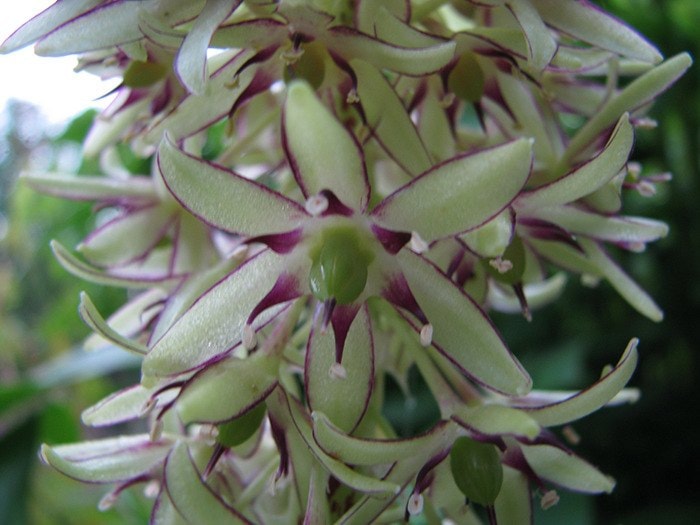Who says you cannot grow pineapples in the Comox Valley?
Well...actually, they are not the fruit-eating variety but the garden type — pineapple lilies or Eucomis spp. But the flowers sure look like miniature pineapples!
Our plants always create a bit of a stir when visitors encounter them in the garden. And late summer into autumn is when they really shine.
The plant itself is a low rosette of strap-like leaves. Leaf length is dependant on species. There are some dwarf varieties.
Many individual star-shaped flowers are formed in a dense cluster at the top of the stem and topped with a crown of leafy bracts. The whole thing looks very much like a small pineapple on a stick!
There are 10 species in this genus and we have two of them in our garden — Eucomis comosa and E. bicolour.
So far. The plant breeders have been busy hybridizing recently and the latest cultivars are stunning.
One of these with lovely deep rich burgundy leaves has found its way into our garden. If you like dark leaves for the wonderful accent they add to your landscape design this is definitely a must-have plant.
It is called Eucomis comosa 'Sparkling Burgundy'. A very nice change from the usual medium green-coloured leaves of the species.
Eucomis are native to South Africa, Swaziland and Lesotho (a small country within the country of South Africa) where it can be found growing as high as 9,100 feet (2,800 metres) above sea level.
Most references list our two species in Zones 8 to 10. This means we have to dig up the bulbs every fall, dry them and store them, as they are not hardy in our Zone 7 region of the Valley.
But if you know John, he has to push the envelop sometimes. He has been leaving our Eucomis bicolor bulbs in the ground over the last two winters and they have come up each spring.
The fact eucomis grow at higher elevations is our first clue to John's successful trial. However, last winter was a mild one and the year before we had good snow cover out here in Black Creek.
Third year, he may not be so lucky and I have warned him. Not always a good idea to get too smug. It sometimes comes back to smack you in the face.
Traditionally in its native countries, the bulb and root parts of some of the pineapple lily species are used in medicines. Shavings are boiled in water or milk and then added as an ingredient to infusions for treating pain and fever.
Surprisingly, its use in traditional medicine is what has this plant noted as 'Near Threatened' on the International Union for Conservation of Nature's (IUCN) Red List in its native country. Scientists believe harvesting of the bulbs for medicinal use is responsible for a 20-per-cent drop in population numbers over the past 75 years.
Not sure why the numbers are decreasing so drastically in South Africa, as we have noticed a steady increase in size on our two species. They are bulbs after all.
Given our experience, I would think if the African plants are being harvested properly ... taking some bulbs and putting some back in the ground ... it would be a totally sustainable undertaking. Perhaps there are other environmental factors involved in the pineapple lily's decline in its native country.
A shame it is declining where it has such a noble medicinal use in one of the poorest regions of the world. Thankfully, though, this particular plant genus remains very popular as an ornamental plant in other countries which means it assuredly will never become wholly extinct.
I hope.
It really is fun growing little pineapples in our non-tropical garden.
Leslie Cox co-owns Growing Concern Cottage Garden in Black Creek. Her website is at www.duchessofdirt.ca and her column appears every second Thursday in the Record.
